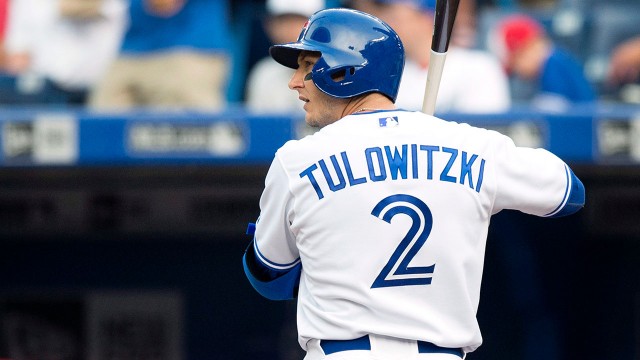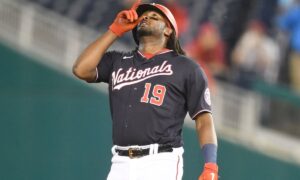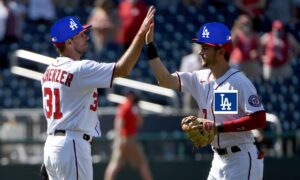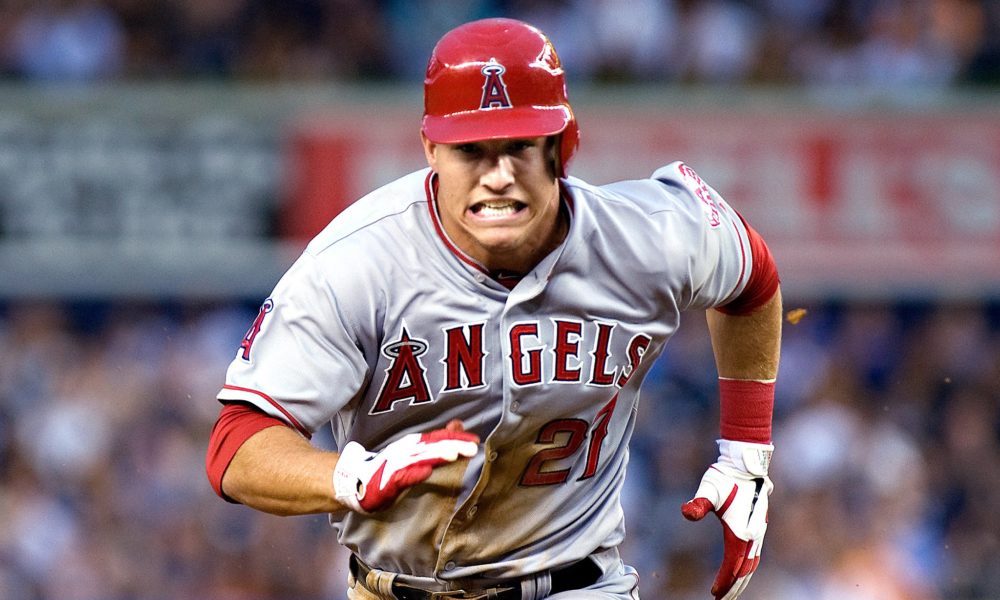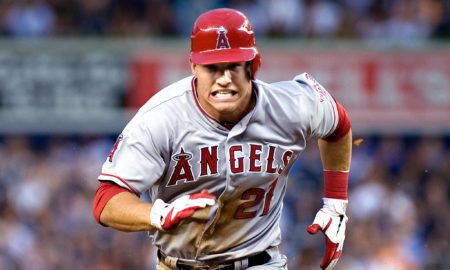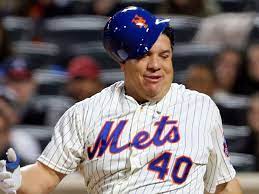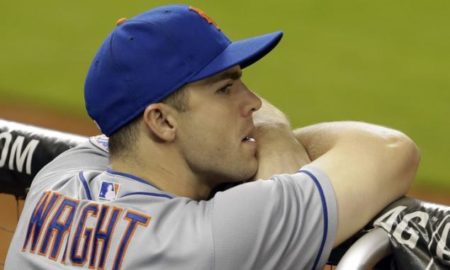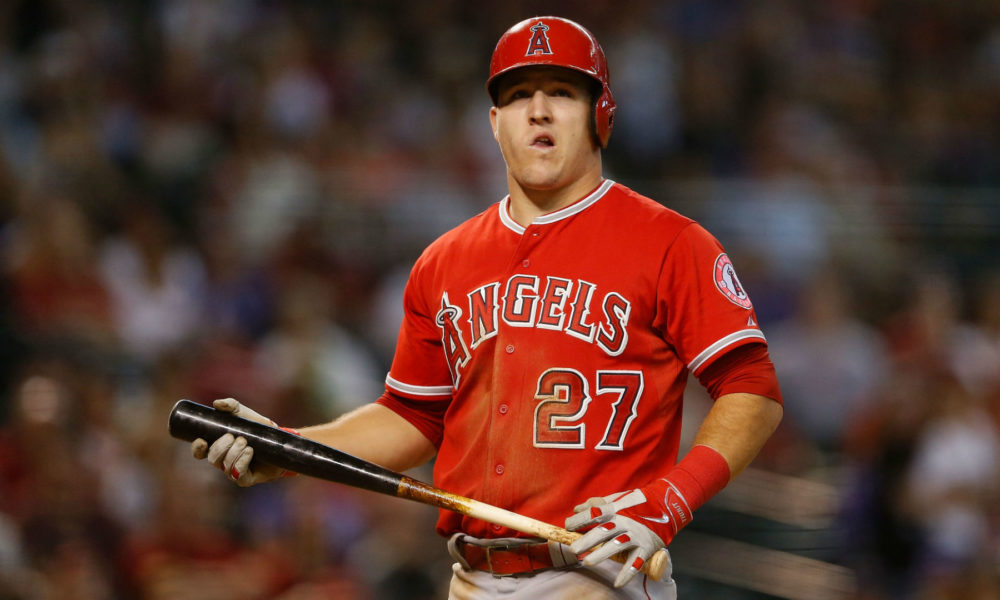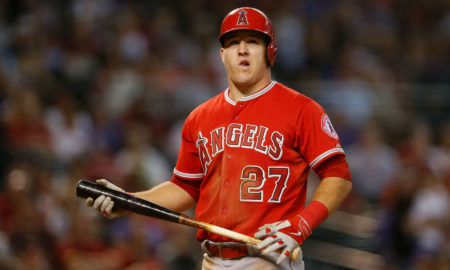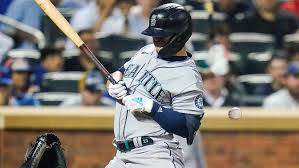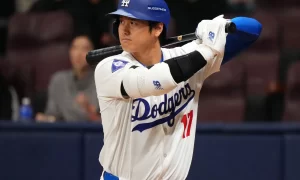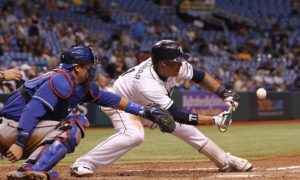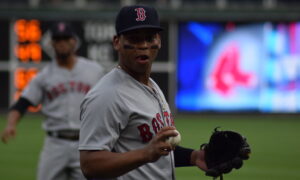The 2015 non-waiver deadline has come and gone. It was one of the wilder trade deadlines since I have been keeping this near obsessive pulse on the Major League Baseball hot stove. Known prospects were being swapped for rentals, the Astros were making win-now moves, and 41 trades were agreed upon by 29 organizations. I will try to touch on the big deals here, but I may not get to all of them since there were simply so many.
To the casual fan, all these names and players changing jerseys will be disorienting. To us seasoned fans, it’ll simply be weird. But I like weird, and you should too.
Winner, Winner Chicken Dinner
Toronto Blue Jays: The Blue Jays pushed all their chips to the middle of the table and proclaimed their intention to win the 2015 World Series to anyone who was paying attention. The club, which is flirting with .500, went out and acquired all-world shortstop Troy Tulowitzki, and the wildly underrated Ben Revere to augment a lineup that already lead the league in runs scored by a significant margin. The club also went out and added David Price, one of the few true Aces in the game. Along with those moves, the Blue Jays acquired a few bullpen pieces that are sure to pay dividends if the club actually reaches the postseason. If an organization is going to make moves to get into the postseason, then this is the way to do it!
But more than the Blue Jays being exciting and causing my phone to blow up, this was the smart move for this team. Jose Bautista and Edwin Encarnacion are both on the wrong side of 32. Both are slated to be free agents in 2016 and both could prove incredibly valuable at this time next year if the Jays find themselves outside of the playoff hunt. 2015 was always going to be their year. It’s good to see them recognize their window and address their needs with this flurry of activity at the deadline
Los Angeles Dodgers: The Dodgers pulled off an incredibly complex trade that landed them Alex Wood, Matt Latos, Jim Johnson, and Luis Avilan from the Braves and Marlins. The deal essentially cost them Hector Olivera, who they had signed out of Cuba just 6 months earlier. While Wood and Latos are not David Price or anywhere near “Ace” status, the two provide the Dodgers with additional excellent and mostly reliable starting pitching options. In Wood’s case, the Dodgers acquired a 24-year old lefty under team control for another 4 years. It’s hard not to like the move, especially when the currency used to acquire that talent was essentially just US dollars.
Houston Astros: It’s been over a month since our last post on Off The Bench, but that one was titled “So, Uh, the Astros Are Legit.” In the month that’s passed, the Astros added the guy who’s second in the AL in ERA, Scott Kazmir, and a guy, Carlos Gomez, who finished in the top-10 in WAR in 2014. They’ve added to their roster without trading away any of the premier young talent that they stockpiled while tanking each of the past three seasons. Further, the Carlos Gomez addition, which I love, came with the Mike Fiers, a number four starter who should prove very valuable as the Astros look to curb the innings of the young guns in their rotation. The club is currently in first place and appears to be staying there.
I don’t hate it, I don’t love it, but I’m optimistic
Atlanta Braves: The Braves were basically the other end of this Dodgers deal. They traded away Alex Wood, some bullpen pieces, and a prospect who didn’t quite fit into their future plans for what looks like the $30ish Million that they were unwilling to pay Hector Olivera in January. $30ish million is a boatload of money – about half of the Marlins payroll and the Braves seem excited about the opportunity to have Olivera man third base on the cheap. The issue here is that they’ve traded a known quantity, Alex Wood, plus an unknown quantity, Jose Peraza, for an older unknown quantity, Hector Olivera. But this current Braves braintrust seems to know what it’s doing and has been stockpiling young arms with the intention of making moves just like this one.
Miami Marlins: The Marlins are bad. They have the second worst record in baseball. They just traded Mat Latos, Dan Haren, Mike Morse, and Steve Cishek. They got back 7 minor league pitchers, a minor league shortstop, and a minor league catcher. I had never heard of any of the guys they got back, but aren’t these the types of moves that bad clubs should be making? Sure, you’d like to acquire premium talent, but there is strength in numbers too.
Philadelphia Phillies and Texas Rangers: The Cole Hamels trade is one of those rare trades that seems to make sense for both sides. The Rangers get Cole Hamels to pair with Yu Darvish for the 2016 and beyond, while the Phillies have rebuilt their farm system and begun the process to fielding a competitive team again. Similarly, the Rangers made this deal with more than the next two months in mind. True, Hamels may help the Rangers catch the Wild Card over the next two months, but he’ll be a part of an even more exciting 2016 nucleus in Arlington. I’m cautiously optimistic about this deal for both sides, for now. Ask me again next summer.
I don’t hate it, I don’t love it, but I’m pessimistic
Kansas City Royals: Every pundit seems to really like the Royals’ additions of Johnny Cueto and Ben Zobrist. Count me among those less cheery on the two new Royals. Cueto is great, but is a guy that has already fallen apart once on the big stage. He’s a real number one right now, but seems like a classic CJ Wilson type – not as great as his numbers indicate. Meanwhile, Zobrist is a very important addition to the club as they looked to upgrade at second base and provide more offensive depth at the big league level. They’re destined for the playoffs and seem like a team on a mission to capture that World Series ring, but I’m just not so sure. Their window to compete is essentially “now” with Alex Gordon a free agent at seasons end, and with their young hitters climbing the arbitration latter. I get why they made these moves and that the moves make them better, but do they really put the Royals over that edge? The playoffs are a crapshoot and sacrificing some of the future for a slightly better chance in the playoffs just doesn’t work for me. It’s World Series or bust for these guys and that’s a tough proposition for any organization.
Detroit Tigers: The Tigers traded away Yoenis Cespedes, David Price, and their closer Joakim Soria, all free agents in two months. The club is hardly going into rebuilding mode with $107 Million on the books in 2017. I get where it makes sense to try to punt this season, and add more cheap talent for future years when payroll could get even tighter. But the question here is: what is the long term plan for the Tigers? They owe Justin Verlander $28 Million through 2019 and Victor Martinez is going to be making $18 Million through 2018. The club is going to have some real albatross contracts, and it’s smart to try to get cheaper talent to surround these guys going into the future. However, shouldn’t this team be trying to win when these guys are all in the performance years of their contracts? It’s an odd time in Detroit.
Losers, Losers, Go Home Losers
New York Mets: The Mets heard from their fans about the need to add a hitter or four to a lineup that was holding down a stellar rotation. From Keith Law: “The Mets, meanwhile, shipped out seven pitching prospects, two of them in the system’s top six overall prospects, for a quartet of rentals, three of whom are very low-impact acquisitions, in a year in which they gave up their first-round pick to sign Michael Cuddyer, who’s been a replacement-level player this year when healthy.” Throw in that the best of the trades, the one that landed Carlos Gomez in NY for more than two months, was nixed for “health concerns” that smelled suspiciously of “financial limitations” and this trade deadline has been a disaster for the Mets. Further, why are Matt Harvey, Zach Wheeler, Noah Sydergaard, Jacob DeGrom, Steven Matz, Dillon Gee, Bartolo Colon, Jon Niese, and Rafael Montero all still in the organization? Their best trade pieces have been horribly mismanaged over the past 12 months, and now they’ve mismanaged a trade deadline.
Milwaukee Brewers: The Brewers turned themselves into sellers at the deadline figuring now was the best time to get good value for Carlos Gomez, packaging him with Mike Fiers for a group of prospects. According to reports, that group is nothing too special with Outfielder Brett Phillips the only guy likely to provide real value. Dealing a talent like Gomez without getting an impact bat and an impact arm represents a misstep. The Brewers will need to rebuild a bit next year as the Kyle Lohse (6.24 ERA) and Matt Garza (5.20 ERA) free agent signings look even worse now than they did at the time. They also failed to trade their closer, Francisco Rodriguez, but K-Rod is under contract through 2016 and could prove a fun trade piece next July. However, this is a club that is one of the worst in the Majors and needs to recognize this reality sooner rather than later so as to begin the rebuilding process towards contention in a tough NL Central.
-Sean Morash

